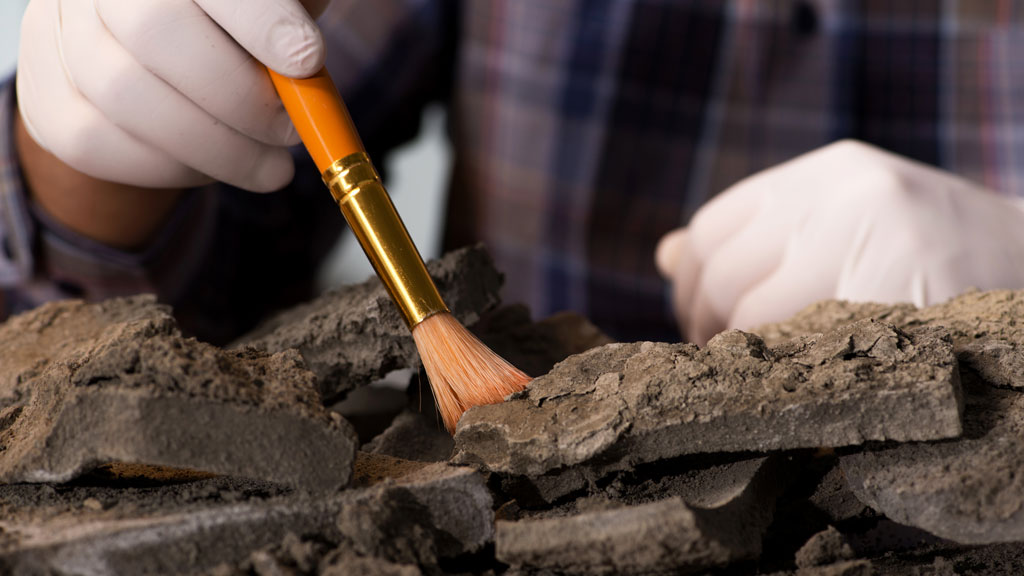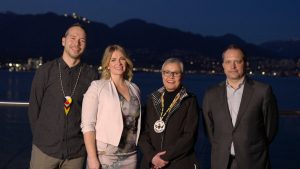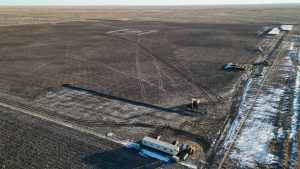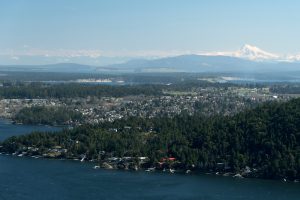Bringing an archeologist onto a building site for an assessment, using the growing amount of technology available, and having a back-up plan can head off work disruptions and shutdowns that occur when First Nations graves and artifacts are unexpectedly unearthed.
“It is not that expensive to get a (consulting) archeologist on site,” said Simon Fraser University archeology professor Dana Lepofsky, who has worked for decades on B.C.’s Coast. Especially when that cost is compared to running into First Nations graves or sites that can bring the project to a halt, idling expensive equipment or incurring penalties under B.C.’s 2019-toughened Heritage Conservation Act, which makes it an offense to destroy a First Nations historical site.
Also, an investigation of a site can prevent what has become the one of the industry’s worst practices — plowing thru such sites and leaving equipment operators at risk. Lepofsky, and other archeologists, tell stories of equipment operators placed in vulnerable positions where they are ordered to ignore First Nations sites.
“If you hit a midden, that person is told just go faster,” she said, or contractors threaten employees. “They are told if they report bones they are fired.
“It is not just the legal aspect, there is the ethical aspect, as well,” Lepofsky said, adding many of these sites are like libraries holding the stories and history of B.C. “You wouldn’t bulldoze a library, would you?”
Known sites are recorded with the B.C. Archaeology Branch, a repository listing 50,000 throughout B.C.
B.C. has seen a number of recent cases where development has unearthed remains. In February, in Victoria, First Nations ancestral remains were found at a Dallas Road construction site. Also at Dallas Road construction sites, remains were found in 2013 and 2009.
The same month this year in Saanich, ancestral remains were found at a Cordova Bay Road construction site. In March, an expansion project at a pub on Hornby Island was halted when a First Nations child’s remains were discovered.
Large coastal developments have run into First Nations sites as well with Poets Cove Resort and Spa on South Pender in 2003 fined $50,000 for excavating and damaging a First Nations site. In March, a 32.1-hectare site near Powell River ran into development problems with the developer claiming he was not on a site as outlined by the B.C. government registry, while local First Nations maintain the area is of cultural significance and urged an assessment done.
Not all sites have been registered with government and not all registered sites are deemed accurate.
“A lot of the sites registered in the ‘60s, ‘70s, and ‘80s did not have a lot investigation and the mapping was not that accurate,” said Fraser Bonner, senior archeologist with Ursus Heritage Consulting, who estimates that as high as 90 per cent of the B.C. registered sites have not been thoroughly investigated.
Bonner believes change is occurring and there is an increase in developers and the construction industry to investigate prior to digging. Also, he said, there are more municipalities now demanding that an assessment be carried out prior to any construction, especially in areas with characteristics where First Nations people may have lived, such as around lakes or shorelines.
Lepofsky said discovering an archeological site doesn’t mean that the project is derailed, but a developer or construction company can make compromises on the project design. At Union Bay Estates near Courtenay, B.C., an excavator operator, while clearing land last year for a major new development and marina, unearthed a First Nations skull with an oblong shape (similar to those found amongst Peru natives who bound babies’ heads). It was the remains of a lost Pentlatch group of First Nations, which once lived in the area. Remains of 60 individuals were recovered and by working with the First Nations group, the developer was able to set aside areas where the remains would be reinterred in their ancestral area.
Sources Archaeological and Heritage Consultants Hartley Odwak, a co-principal, said there are numerous ways to gain an insight into an area to be developed.
“The first place is the BC Archaeology Branch,” he said to determine whether the area is listed on the site register.
“They can take a long time (to get back),” he said, so many companies will hire a consulting archeologist to do a background check for a small fee.
The local First Nations will have knowledge of an area and many have their own archeologists who have historical knowledge.
“They might also check with the local municipality,” he said.
Archeology impact assessments are becoming more common and his firm has been fielding calls from realtors in areas such as Scheldt and Powell River for properties under development.
Finding sites of historical significance takes knowledge of the local customs and practices of First Nations as they vary throughout B.C., archeologists said. First Nations burial practices ranged from tree to ground burials in regions.
Technology exists that can help ground searches, but it is still one part sleuthing and one part science.
Percussion coring is one way of determining if anomalies in the subsurface exist as core samples in the area will provide a profile of the earth layers and if there are areas where that profile does not match or indicate past human activity, Lepofsky said.
Geophysical Survey Systems Inc. (GISS) is North America’s largest manufacture of ground penetrating radar (GPR) and its staff archeologist Peter Leach has been involved in a number of archeologist and forensic uses of the company’s equipment. The equipment is the size of a lawnmower or stroller and rolls over the ground surface emitting a rebounding ground frequency and the profile is viewed on an onboard computer monitor. The higher frequency provides the best images but is limited in depth while mid or lower frequencies got deeper but provide less detail.
Canadian GISS representative Jan Kesik said the equipment is purchased by consultants that do utilities testing but also universities carrying out archeological work. The equipment costs $10,000 to $20,000 and is commonly used on larger sites such as bridge and road right-of-ways. Kesik said the company keeps a roster of eastern and western Canadian companies that has GISS equipment and training and can be provide a list to potential clients by emailing Canada@geophysical.com.
Western Canada consulting firm Geoscan’s Peter Takacs, who has been involved in archeological surveys, reiterated using GPR only adds information to the comprehensive data collection needed on a site that also consists of history and the site topography.










Recent Comments
comments for this post are closed